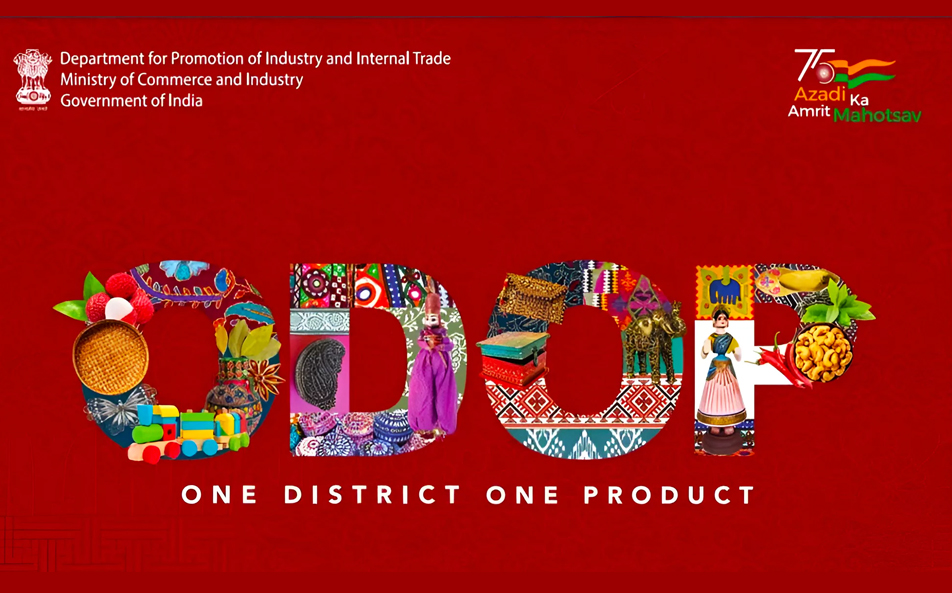
The United Indian

India, with its diverse landscape and rich cultural heritage, boasts a plethora of unique products crafted across its vast expanse. Recognizing the potential of these local treasures, the government launched the One District One Product (ODOP) initiative, a transformative program aimed at fostering balanced regional development and promoting indigenous products on a global scale.
The Essence of ODOP
At its core, ODOP seeks to identify and nurture a single product from each district that best represents its unique identity, resources, and skills. By focusing on a specific product, the initiative aims to:
- Boost Local Economies: By increasing production, marketing, and export of the chosen product, ODOP aims to generate employment opportunities, enhance rural livelihoods, and revitalize local economies.
- Preserve Traditional Crafts and Industries: Many ODOP products are rooted in traditional crafts and industries that risk being lost to modernization. By promoting these products, the initiative helps preserve valuable cultural heritage.
- Enhance Export Potential: By providing support for product development, branding, and market access, ODOP facilitates the export of Indian products, contributing to the nation's economic growth.
- Promote Regional Development: By focusing on a specific product in each district, ODOP ensures balanced development across the country, preventing over-reliance on a few major industries.
Implementation of ODOP
The implementation of ODOP involves a multi-pronged approach:
- Product Identification: Each district meticulously identifies a product that best represents its unique identity, considering factors such as historical significance, local expertise, and market potential.
- Skill Development: To enhance production capabilities, the government provides training programs to artisans and craftsmen, focusing on quality improvement, design innovation, and modern production techniques.
- Market Access: ODOP facilitates market access through various channels, including:
- Domestic Market: Organizing exhibitions, fairs, and online platforms to showcase ODOP products to domestic buyers.
- International Market: Participating in international trade fairs and exhibitions to promote ODOP products globally.
- E-commerce Platforms: Leveraging online platforms to connect artisans and craftsmen with a wider customer base.
- Branding and Promotion: Each ODOP product is given a unique brand identity to enhance its market appeal. The government also undertakes extensive promotional campaigns to create awareness and build demand for these products.
Success Stories of ODOP
The ODOP initiative has already yielded impressive results across various districts:
Moradabad (Uttar Pradesh): Renowned for its brassware, Moradabad has seen a significant increase in exports and employment opportunities through ODOP.
Varanasi (Uttar Pradesh): The initiative has revitalized the traditional silk and handloom industry in Varanasi, providing a sustainable livelihood for thousands of artisans.
Kutch (Gujarat): The unique handicrafts and textiles of Kutch have gained global recognition through ODOP, empowering local communities and preserving their cultural heritage.
Challenges and Future Directions
While ODOP has shown significant promise, certain challenges remain:
- Maintaining Quality Standards: Ensuring consistent quality across all ODOP products is crucial for sustaining consumer trust and market demand.
- Addressing Logistics and Infrastructure: Improving logistics and infrastructure in rural areas is essential for efficient transportation and timely delivery of ODOP products.
- Promoting Innovation and Design: Continuous innovation in product design and development is necessary to stay competitive in the evolving market.
To address these challenges, the government is taking several steps:
- Setting up Quality Control Mechanisms: Implementing stringent quality control measures to ensure that ODOP products meet international standards.
- Improving Infrastructure: Investing in road networks, warehousing facilities, and cold storage to facilitate the smooth movement of goods.
- Promoting Design Innovation: Organizing design competitions and workshops to encourage creativity and foster new product ideas.
Conclusion
The One District One Product initiative is a powerful tool for driving economic growth, promoting regional development, and preserving India's rich cultural heritage. By focusing on unique local products, ODOP empowers artisans and craftsmen, creates employment opportunities, and strengthens the country's export potential. As the initiative continues to evolve, it holds the promise of transforming India into a global hub for high-quality, handcrafted products.
Read more in Government Sector
May 28, 2025
TUI Staff
May 22, 2025
TUI Staff

Stay Tuned with The United Indian!
Our news blog is dedicated to sharing valuable and pertinent content for Indian citizens. Our blog news covering a wide range of categories including technology, environment, government & economy ensures that you stay informed about the topics that matter most. Follow The United Indian to never miss out on the latest trending news in India.
©The United Indian 2024









